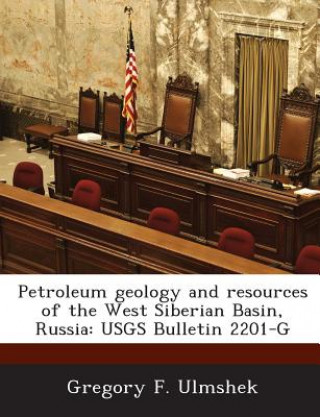
Kézbesítés
Vásárlási tanácsadó





Nem vált be? Semmi gond! Nálunk 30 napon belül visszaküldheti
 Ajándékutalvány
bármilyen értékben
Ajándékutalvány
bármilyen értékben
Ajándékutalvánnyal nem nyúlhat mellé. A megajándékozott az ajándékutalványért bármit választhat kínálatunkból.
Petroleum Geology and Resources of the West Siberian Basin, Russia
 Angol
Angol
 53 b
53 b
30 nap a termék visszaküldésére
Ezt is ajánljuk


The West Siberian basin is the largest petroleum basin in the world covering an area of about 2.2 million km2. The basin occupies a swampy plain between the Ural Mountains and the Yenisey River. On the north, the basin extends offshore into the southern Kara Sea. On the west, north, and east, the basin is surrounded by the Ural, Yenisey Ridge, and Turukhan-Igarka foldbelts that experienced major deformations during the Hercynian tectonic event and the Novaya Zemlya foldbelt that was deformed in early Cimmerian (Triassic) time. On the south, the folded Caledonian structures of the Central Kazakhstan and Altay-Sayan regions dip northward beneath the basin?s sedimentary cover. The basin is a relatively undeformed Mesozoic sag that overlies the Hercynian accreted terrane and the Early Triassic rift system. The basement is composed of foldbelts that were deformed in Late Carboniferous?Permian time during collision of the Siberian and Kazakhstan continents with the Russian craton. The basement also includes several microcontinental blocks with a relatively undeformed Paleozoic sedimentary sequence. The sedimentary succession of the basin is composed of Middle Triassic through Tertiary clastic rocks. The lower part of this succession is present only in the northern part of the basin; southward, progressively younger strata onlap the basement, so that in the southern areas the basement is overlain by Toarcian and younger rocks. The important stage in tectono-stratigraphic development of the basin was formation of a deep-water sea in Volgian?early Berriasian time. The sea covered more than one million km2 in the central basin area. Highly organic-rich siliceous shales of the Bazhenov Formation were deposited during this time in anoxic conditions on the sea bottom. Rocks of this formation have generated more than 80 percent of West Siberian oil reserves and probably a substantial part of its gas reserves. The deep-water basin was filled by prograding clastic clinoforms during Neocomian time. The clastic material was transported by a system of rivers dominantly from the eastern provenance. Sandstones within the Neocomian clinoforms contain the principal oil reservoirs. The thick continental Aptian?Cenomanian Pokur Formation above the Neocomian sequence contains giant gas reserves in the northern part of the basin. Three total petroleum systems are identified in the West Siberian basin. Volumes of discovered hydrocarbons in these systems are 144 billion barrels of oil and more than 1,300 trillion cubic feet of gas. The assessed mean undiscovered resources are 55.2 billion barrels of oil, 642.9 trillion cubic feet of gas, and 20.5 billion barrels of natural gas liquids. The largest known oil reserves are in the Bazhenov-Neocomian total petroleum system that includes Upper Jurassic and younger rocks of the central and southern parts of the basin. Oil reservoirs are mainly in Neocomian and Upper Jurassic clastic strata. Source rocks are organic-rich siliceous shales of the Bazhenov Formation. Most discovered reserves are in structural traps, but stratigraphic traps in the Neocomian clinoform sequence are pro-ductive and are expected to contain much of the undiscovered resources. Two assessment units are identified in this total petroleum system. The first assessment unit includes all conventional reservoirs in the stratigraphic interval from the Upper Jurassic to the Cenomanian. The second unit includes unconventional (or continuous), self-sourced, fractured reservoirs in the Bazhenov Formation. This unit was not assessed quantitatively. The Togur-Tyumen total petroleum system covers the same geographic area as the Bazhenov-Neocomian system, but it includes older, Lower?Middle Jurassic strata and weathered rocks at the top of the pre-Jurassic sequence. A Callovian regional shale seal of the Abalak and lower Vasyugan Formations separates the two systems. The Togur-Tyumen system is oil-prone; gas reserves are insignificant. The principal o
Információ a könyvről
 Angol
Angol




 Hogyan vásároljunk
Hogyan vásároljunk



















